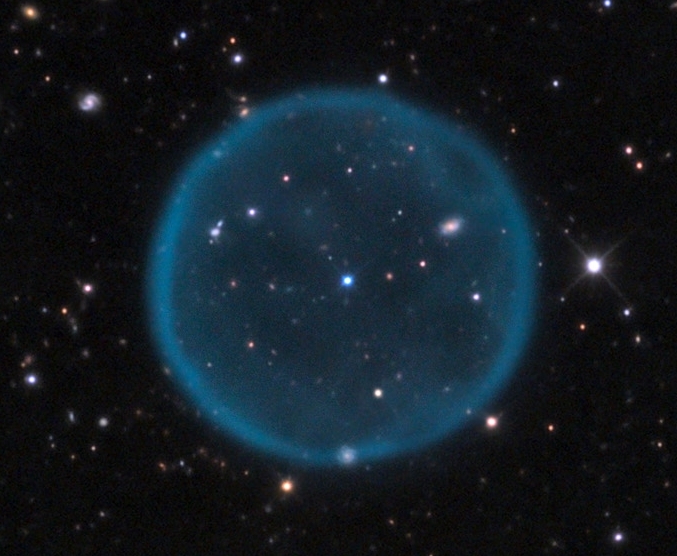
This is one of the largest known near-perfect spheres in the Universe! It's called Abell 39 and it's 2.5 light years in diameter. When a star about the mass of our Sun runs out of fuel, it first expands to become a red giant, and then its outer layers are expelled, forming a so-called planetary nebula like this... though it has nothing to do with planets: people were confused when they made up that name.
Usually planetary nebulae get distorted in interesting ways, but this one is almost perfectly round! However, the star in the middle is not at the exact center: it's about 1/10 of a light-year off to one side.
Do you know why this nebula looks brighter near the edges?
From 1979 to 1982, Ranulph Fiennes led the 'Transglobe Expedition', the first trip around the world to cross both poles on land. In 1993 he crossed Antarctica in 90 days with just one partner. In 2000 he tried to be the first to hike solo to the North Pole. He cancelled this 840-kilometer trek when he developed frostbite in his left hand - he'd plunged it into freezing water when one of the sledges he was towing fell through thin ice. In 2009, at the age of 65, he became the oldest person to climb Mount Everest. This was his third attempt. He suffered a heart attack on his first, but this didn't stop him from trying until he succeeded.
Now he's planning a six-month trek across Antarctica in the depths of winter! He'll leave for Antarctica on December 6th, and hopes to begin his trek on March 21st next year. He and his 5 team members will travel on skis, but will be followed by two modified tractors, towing two sledge-mounted living quarters, supplies, equipment, and 155,000 liters of special fuel. They will have to climb 3000 meters onto the inland plateau, trek for several hundred kilometers with all the supplies and equipment they need, descend 3000 again... and finally trek 3000 kilometers to reach the Ross Sea.
For more on his plan see:
For more on the Transglobe Expedition:
For his failed attempt to reach the North Pole on his own:
In 794, the Council of Frankfurt, called by Charlemagne, condemned "the persecution of alleged witches and wizards". It called the belief in witchcraft "superstitious", and ordered the death penalty for those who presumed to burn witches.
The craze for witch hunts reached its heights much later, from 1480 to 1750.
© 2012 John Baez
baez@math.removethis.ucr.andthis.edu